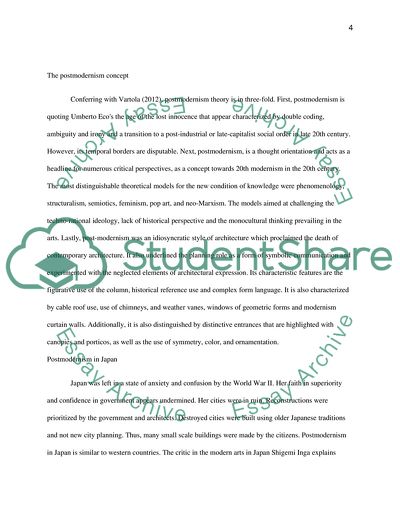Cite this document
(What is Postmodernism Essay Example | Topics and Well Written Essays - 2250 words - 1, n.d.)
What is Postmodernism Essay Example | Topics and Well Written Essays - 2250 words - 1. https://studentshare.org/architecture/1867778-architectural-history-theory-criticism
What is Postmodernism Essay Example | Topics and Well Written Essays - 2250 words - 1. https://studentshare.org/architecture/1867778-architectural-history-theory-criticism
(What Is Postmodernism Essay Example | Topics and Well Written Essays - 2250 Words - 1)
What Is Postmodernism Essay Example | Topics and Well Written Essays - 2250 Words - 1. https://studentshare.org/architecture/1867778-architectural-history-theory-criticism.
What Is Postmodernism Essay Example | Topics and Well Written Essays - 2250 Words - 1. https://studentshare.org/architecture/1867778-architectural-history-theory-criticism.
“What Is Postmodernism Essay Example | Topics and Well Written Essays - 2250 Words - 1”. https://studentshare.org/architecture/1867778-architectural-history-theory-criticism.


